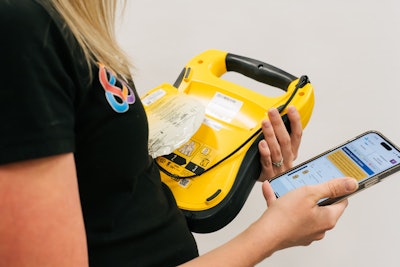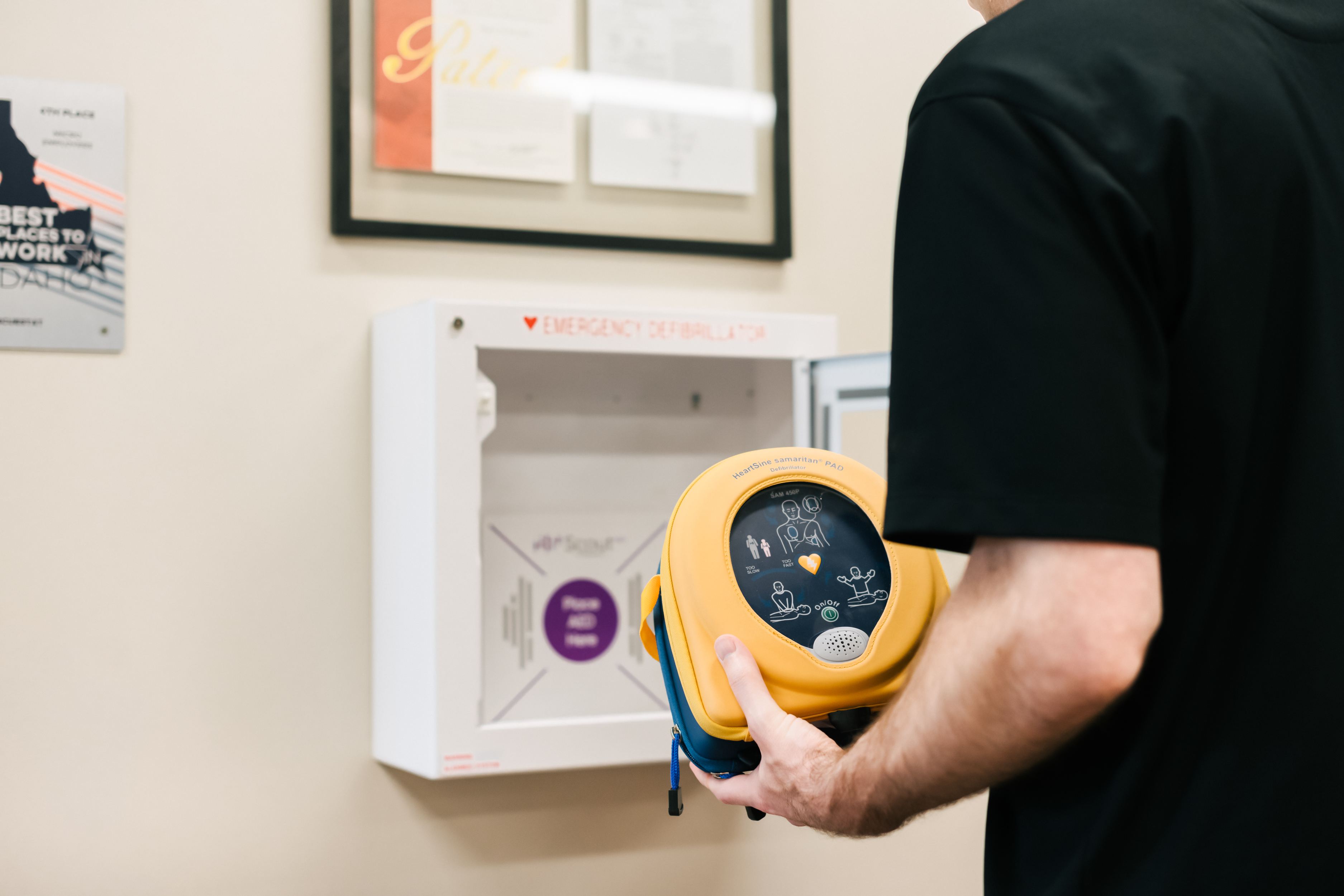
Cardiac arrest. You’ve been hearing about it a lot, but why now?
Sudden cardiac arrest (SCA) kills more people than guns, cars and strokes — combined. Sadly, few people were paying attention until 17 million people witnessed it happen to Damar Hamlin, Buffalo Bills safety, on national television. Recently, it was brought to the spotlight again with the cardiac arrest of USC Trojans basketball star Bronny James, LeBron James’ son. The sad reality is that sudden cardiac arrest strikes about 1,000 people a day and the majority of those people don’t have a trained staff with an automated external defibrillator (AED) moments away like these athletes did.
Sudden cardiac arrest is not new or rare, it happens to all ages and healthy individuals. SCA is a leading cause of death in the United States, accounting for more than 356,000 out-of-hospital cardiac arrests every year and a survival rate of less than 10%.
Fortunately, this killer has a known cure — a shock from an AED. So, wouldn’t the answer be to just increase the number of AEDs? Ironically, over the years, more and more AEDs are publicly accessible, yet the survival rate remains abysmal at a stubborn 10%. Having an AED is not enough. There are four components that must be aligned and ready to have a successful AED program:
- Equipment
- Organization
- People
- Culture

Equipment ready: Having an AED does not mean that it is ready to save a life
Although it is difficult to ascertain the exact number of AEDs in the United States, it is estimated that 3 to 5 million AEDs have been distributed over the past few decades. Of these, it is estimated that up to 20% are not ready to shock. That means there could be more than 500,000 AEDs unable to save a life when sudden cardiac arrest strikes.
Having equipment ready means that it is visible, accessible and functional. An AED should be able to be retrieved for use within three minutes. An AED behind a locked door or with faulty pads or batteries isn’t going to save a life.
Organization ready: Have a plan to reduce risk
Not having an AED or having an AED that doesn’t work can create legal issues for organizations. Because AEDs need ongoing monitoring and maintenance it is best practice to adopt and adhere to an AED program to ensure compliance. Best-in-class programs consider the number of AEDs needed, AED placement, inspection protocols, ongoing maintenance, and post-cardiac arrest event review from a licensed physician.
A best-practice AED program will reduce risk to your organization, your members and your staff. It will also cultivate trust with your members, showing them that you prioritize their safety and well-being, creating an environment that inspires confidence and reassurance.

People ready: AEDs are powerless without people
Sadly, most lawsuits that involve sudden cardiac death or disability are not because an AED was not present, but because it was not used, the staff was not trained, or the AED was not ready.
A large reason why survival rates are so low is because bystanders don’t take action. The good news is that if CPR is performed immediately, it could double or triple a victim’s chance of survival. It increases even more if an AED is used.
Reduce your risk and increase compliance by having your team trained to perform effective CPR and use an AED. However, even if not all team members are trained, everyone in your organization should be empowered with knowledge and resources to use an AED.
Culture ready: Create a Culture of First Responders™
Because sudden cardiac arrest is a leading cause of death, we all have the moral responsibility to share knowledge to assist others. Creating this Culture of First Responders™ can start to change the status quo around sudden cardiac arrest survival.
Unfortunately, sometimes it takes high-profile events for people to understand the magnitude of a problem like sudden cardiac arrest. Because of its effectiveness in saving lives, a functioning AED program should be as commonplace as a fire extinguisher or a first aid kit. It doesn’t have to be complicated. RescueStat offers simple, comprehensive products and services to ensure your AED, organization, people and culture are ready when the unexpected strikes.
Learn more at info.rescuestat.com/athleticbusiness or call (208) 246.8932.












